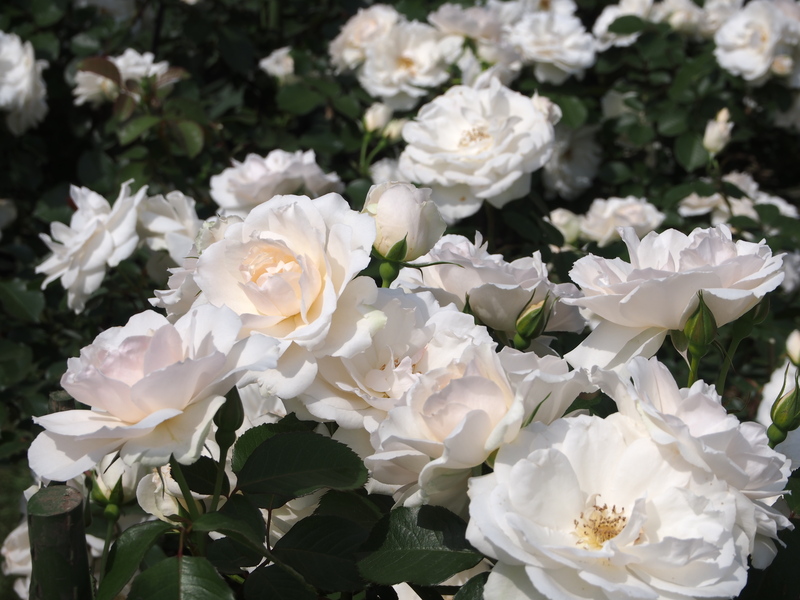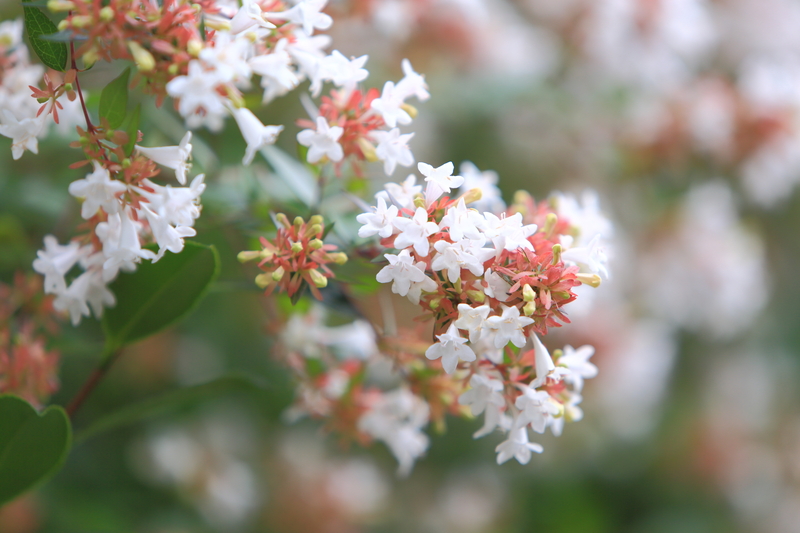Hedge Trimming Techniques for a Harmonious Garden Layout
Posted on 23/09/2025
Hedge Trimming Techniques for a Harmonious Garden Layout
Creating a harmonious garden starts with careful planning, strategic planting, and meticulous maintenance. Among these essentials, hedge trimming stands out as a key practice that not only improves aesthetic appeal but also ensures the overall health of your garden. In this comprehensive guide, we'll explore a variety of hedge cutting techniques and best practices that guarantee a well-balanced, lush, and structured landscape.

Why Are Well-Manicured Hedges Important for Garden Harmony?
Hedges are more than just boundaries; they provide privacy, shelter, and form in a garden layout. Neatly trimmed hedges help frame vistas, create structure, and support biodiversity. A harmonious garden layout relies on these features for balanced vistas and a sense of flow.
- Privacy: Hedges serve as natural fences, offering seclusion while blending seamlessly with the landscape.
- Wind Protection: Densely grown hedges shield delicate plants from strong gusts, creating a microclimate.
- Wildlife Habitat: Healthy, layered hedges offer shelter and food for birds, insects, and other wildlife.
- Aesthetic Appeal: Proper hedge shaping gives a polished look, guiding the eye and creating visual distinction.
The Role of Hedges in Landscape Design
A successful garden design incorporates hedges as backdrops, borders, or focal points. When maintained with the right hedge pruning techniques, these elements reinforce the garden's harmony, ensuring each area is clearly defined and visually appealing.
Choosing the Right Hedge Species for Your Garden
Every harmonious hedge starts with the right plant. Some common choices that thrive with regular hedge trimming include:
- Boxwood (Buxus sempervirens)
- Yew (Taxus baccata)
- Privet (Ligustrum)
- Hornbeam (Carpinus betulus)
- Beech (Fagus sylvatica)
- Laurel (Prunus laurocerasus)
Consider your climate, soil type, and intended function before selecting your hedge species. Each type responds uniquely to different hedge cutting methods and seasonal trimming schedules.
Essential Tools for Hedge Trimming
Using the right equipment is crucial for effective hedge shape maintenance. Investing in high-quality tools not only makes the task easier but also ensures clean cuts and healthy regrowth.
- Hand Shears: Best for precise shaping and detail work on small or delicate hedges.
- Powered Hedge Trimmers: Ideal for long stretches or large, established hedges.
- Loppers and Pruning Saws: Useful for thicker branches within the hedge.
- String Line/Spirit Level: Helpful for achieving uniform, straight edges.
- Protective Gear: Safety goggles, gloves, and sturdy footwear are essential.
Regularly sharpen and clean your tools to minimize plant damage and reduce the spread of disease.
When Is the Best Time to Trim Hedges?
The timing of hedge cutting directly impacts plant health and garden symmetry. The general rule is to avoid trimming during severe heat, frost, or in the middle of the growing season for flowering hedges. Here are some guidelines:
- Evergreen Hedges: Lightly shape in late spring or early summer as new growth appears; major pruning can be done in late summer if necessary.
- Deciduous Hedges: Best pruned in late winter or early spring before new leaves emerge.
- Flowering Hedges: Trim immediately after flowering to avoid cutting off next year's buds.
*Avoid hedge trimming during the nesting season (typically March-July in many regions) to protect wildlife.*
Principles of Hedge Trimming for Harmonious Layouts
A harmonious garden layout requires more than just regular trimming--it depends on proper hedge shaping, symmetry, and health. Here are foundational principles:
- Taper the Hedge: Always trim so the base is slightly wider than the top. This allows sunlight to reach lower branches, preventing leaf loss at the bottom.
- Consistent Height: Use a string line, pegs, or measured stakes to guide your trimming and achieve a uniform height across the hedge.
- Maintaining Clean Lines: Straight, crisp sides and level tops enhance the garden's structure and visual flow.
- Controlled Growth: Remove only the current season's vigorous shoots (known as 'soft' growth) for routine shaping, and avoid cutting into old, woody stems unless rejuvenating the hedge.
- Thinning: Periodically remove older branches or thin out dense areas to promote airflow and light penetration, preventing disease and encouraging lush regrowth.
Routine vs. Restorative Hedge Pruning
- Routine trimming: Focuses on surface maintenance, encouraging bushy growth and neat shapes.
- Restorative/pruning: Involves heavier cutting back to renew old, leggy, or overgrown hedges and restore harmonious outlines.
Step-by-Step Hedge Trimming Guide for Beautiful Layouts
Follow these detailed steps to achieve a strikingly harmonious garden hedge:
- Mark Out Your Design: Use string, canes, or even hosepipes to map out desired lines and curves. This ensures symmetry and guides tool movement.
- Start at the Sides: Trim the vertical faces first, working from the base upward. This prevents trimmed debris from falling onto sections you haven't cut yet.
- Shape the Top: Create a level or gently curved top, depending on your design. Always step back frequently to check for evenness.
- Maintain a Taper: Angle the sides slightly inward at the top--wider at the bottom--so sunlight reaches all levels.
- Fine-Tune Edges: Use hand shears for detailed corrections, curves, or junctions to create crisp, unified borders.
- Clean Up and Mulch: Remove clippings and consider mulching around base to suppress weeds and retain moisture.
Advanced Hedge Shaping Ideas for Garden Harmony
While straight, classic hedges work beautifully in traditional layouts, don't be afraid to explore advanced shaping for a more harmonious and creative garden:
- Geometric Forms: Cubes, spheres, and tiered pyramids create focal points and rhythm.
- Flowing Curves: Undulating or serpentine lines lead the eye and soften angular spaces.
- Topiary: Intricate animal, abstract, or fanciful shapes add personality and a sense of playfulness.
*Remember, advanced hedge sculpture requires patience, regular maintenance, and often slower-growing, fine-leaved species (like boxwood or yew).*
Hedge Trimming for Different Garden Styles
Each garden style benefits from different hedge maintenance techniques:
1. Formal Gardens
Formal layouts depend on precision. Box or yew hedges trimmed into straight lines and geometric shapes underscore the garden's symmetrical design and highlight central features such as fountains or statues.
- Tip: Use spirit levels and taut lines to guarantee accuracy.
2. Cottage and Wildlife Gardens
Cottage garden hedges often appear softer and less manicured, featuring gentle curves and flowering mixed species. Occasional, selective pruning maintains shape without sacrificing the natural look.
- Tip: Trim after main flowering flushes, leaving some old stems for nesting birds.
3. Modern and Minimalist Gardens
Contemporary spaces use block-planting and minimal shapes--continuous green screens, crisp cubes, or paired spheres complement architectural lines.
- Tip: Frequent light trims and precise corners reinforce modern aesthetics.
Maintaining Hedge Health and Vigor
No matter the design, a harmonious hedge must be healthy. Regular feeding and watering--especially during establishment or droughts--promotes lush growth. Here's how to maintain thriving hedges:
- Mulch annually with leaf mold, compost, or bark chips to suppress weeds and retain moisture.
- Feed with a balanced slow-release fertilizer in early spring.
- Monitor pests (aphids, scale, or fungal diseases) and treat promptly to avoid large-scale problems.
- Inspect regularly for gaps or die-back and replace or patch as needed for a consistent look.
Common Hedge Trimming Mistakes to Avoid
- Trimming at the wrong season: This can remove flower buds or expose the plant to disease and frost damage.
- Cutting into old wood: Many species won't regrow readily from bare wood, leading to unsightly gaps.
- Neglecting lower growth: If the top overshadows the base, the lower section becomes sparse.
- Uneven cutting: Results in a lopsided appearance that disturbs the harmony of the garden.
- Using blunt tools: Causes ragged cuts that are more susceptible to infection.
Eco-Friendly Hedge Management: Supporting Biodiversity
A truly harmonious garden respects and nurtures its ecosystem. Practicing wildlife-friendly hedge trimming includes:
- Trimming outside nesting season: Always check for active nests first.
- Choosing native hedge species: Supports local flora and fauna.
- Allowing some hedges to flower and berry: Encourages pollinators and provides food for birds and insects.
- Keeping a natural buffer: Small untrimmed sections offer additional shelter for wildlife.

Frequently Asked Questions on Hedge Trimming Techniques
-
How often should I trim my hedges?
Most formal evergreen hedges need trimming two to three times a year, while informal or mixed-species hedges may only need once or twice. -
Can I rejuvenate an overgrown hedge?
Yes, most deciduous hedges can be hard-pruned in stages over 2-3 years. Evergreens must be approached with caution; some won't regrow from old wood. -
Should I collect clippings?
Yes--clearing debris prevents disease and keeps borders tidy. Shredded clippings can be composted.
Conclusion: Achieve Garden Harmony With Expert Hedge Trimming
Establishing a harmonious garden layout is an art. With diligent application of the right hedge trimming techniques, you can create structure, beauty, and vibrant health in your landscape. From selecting ideal hedge species and using professional tools, to refining shapes and supporting biodiversity, every decision contributes to garden unity. Regular, thoughtful maintenance will reward you with lush, even hedges that guide the eye, shelter wildlife, and provide peace for all who visit.
Ready to transform your garden? Put these hedge trimming techniques into action and enjoy a more harmonious, flourishing outdoor space!

